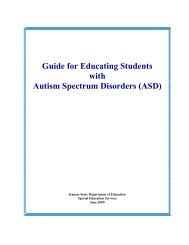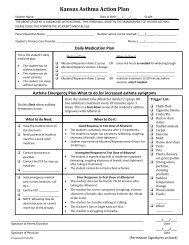People make it happen(PDF)1 - Families Together Inc.
People make it happen(PDF)1 - Families Together Inc.
People make it happen(PDF)1 - Families Together Inc.
You also want an ePaper? Increase the reach of your titles
YUMPU automatically turns print PDFs into web optimized ePapers that Google loves.
Being a Special Advocate<br />
Like personnel from advocacy organizations, friends<br />
can provide a student w<strong>it</strong>h a sense of having an ally.<br />
Having a friend who can advocate a point of view<br />
similar to their own will be a source of support for the<br />
student. Friends should attend any and all meetings<br />
as requested. They should be allowed to have a<br />
voice and share w<strong>it</strong>h the team members what the student’s<br />
vision for the future is.<br />
Friends are an important part of trans<strong>it</strong>ion.<br />
W<strong>it</strong>hout friends people<br />
become isolated and have no place<br />
to turn when they need support, or<br />
someone w<strong>it</strong>h whom to share happiness, sadness,<br />
and successes. Peers can also play<br />
an important role in the trans<strong>it</strong>ion process.<br />
Peers are not necessarily friends, but are from<br />
the same age group, have similar interests, or<br />
are leaders. It is important that a student’s<br />
peers and friends are inv<strong>it</strong>ed to participate<br />
on the trans<strong>it</strong>ion team. Friends and peers are<br />
valuable to the trans<strong>it</strong>ion process because<br />
they can provide insights and information<br />
about the student and about experiences the<br />
student’s peers share.<br />
Specific Roles of Friends<br />
Being a Confidant<br />
Having someone w<strong>it</strong>h whom we can share our dreams,<br />
feelings, and thoughts in a nonjudgemental way is<br />
important. Students often feel much more comfortable<br />
telling a friend something that they might be less<br />
inclined to tell an ”author<strong>it</strong>y figure.” Friends may<br />
know a great deal about a student that is different from<br />
anyone else in the student’s life. For example, a student<br />
may tell her best friend that she wants to work for a year<br />
before she goes to college. She may be afraid to tell her<br />
parents and teachers because they want and expect her to<br />
go to college right after she graduates. By having a<br />
friend at a trans<strong>it</strong>ion planning meeting, the student<br />
may feel more comfortable addressing the issue because<br />
she has a special advocate in her friend who will help her<br />
<strong>make</strong> her point.<br />
Specific Roles of Peers<br />
Being a Role Model<br />
Peers are often in a pos<strong>it</strong>ion of influence. They are<br />
visible and active commun<strong>it</strong>y members who impact<br />
society. In the school setting they have the power to<br />
influence what and how students think about other<br />
students. It is essential then, that students have experiences<br />
w<strong>it</strong>h disabil<strong>it</strong>y issues as well as w<strong>it</strong>h students<br />
w<strong>it</strong>h disabil<strong>it</strong>ies. It is even more cr<strong>it</strong>ical that friendships<br />
are established among all students regardless of<br />
disabil<strong>it</strong>y, and that they are pos<strong>it</strong>ive, equal partnerships<br />
where no one is perceived as an outsider.<br />
Providing Unique Information<br />
Peers are in a pos<strong>it</strong>ion to provide information related to<br />
age issues that adults are often unable to provide.<br />
Especially for a student w<strong>it</strong>h a significant disabil<strong>it</strong>y,<br />
peers can tell the trans<strong>it</strong>ion team how the student can be<br />
included in classes, extracurricular activ<strong>it</strong>ies, and social<br />
events. They can provide information about trends,<br />
what is “in” or “cool,” and what is not. Peers can assist<br />
students w<strong>it</strong>h disabil<strong>it</strong>ies in becoming part of the group.<br />
For example, a student w<strong>it</strong>h a significant disabil<strong>it</strong>y<br />
was fully included into the general education curriculum.<br />
He could not communicate verbally, so he used<br />
an electronic communication board. The board was programmed<br />
to say, “Hello. How are you? My name is<br />
David.” His classmates decided that this message was<br />
not something kids their age would say, so they changed<br />
<strong>it</strong> to say, “Hey, what’s up?”<br />
3





